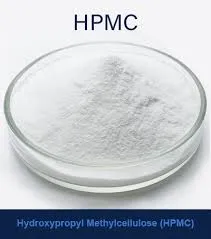
okt. . 06, 2024 02:20 Back to list
how to dissolve hydroxyethyl cellulose
How to Dissolve Hydroxyethyl Cellulose
Hydroxyethyl cellulose (HEC) is a non-ionic water-soluble polymer derived from cellulose, widely used in various industries, including cosmetics, pharmaceuticals, food, and construction. It functions as a thickener, water-retaining agent, and stabilizer. If you're working with HEC, understanding the proper method of dissolution is crucial to ensure its effectiveness in your formulation. Here’s a step-by-step guide on how to dissolve hydroxyethyl cellulose efficiently.
Step 1 Gather the Required Materials
To dissolve HEC successfully, you will need the following materials - Hydroxyethyl cellulose powder - Distilled water or a suitable solvent - A container (preferably a beaker or mixing bowl) - A stirring rod or mechanical stirrer - A thermometer (optional)
Step 2 Measure the Ingredients
Accurate measurement of HEC and the solvent is essential. The typical concentration of HEC can vary based on the intended use, but a common range is 1-2% (weight/volume). For instance, if you need to prepare 1 liter of a 2% solution, measure 20 grams of HEC and 980 milliliters of distilled water.
Step 3 Gradual Addition of HEC
When adding HEC to the solvent, it's important to do so gradually. Rapidly dumping the powder can cause clumping, leading to an uneven mixture. Instead, sprinkle the HEC powder slowly over the surface of the water while continuously stirring. This technique helps prevent the formation of lumps, ensuring a smoother solution.
Step 4 Stir Thoroughly
how to dissolve hydroxyethyl cellulose

Once all the HEC is added to the water, use a stirring rod or mechanical stirrer to mix the solution thoroughly. If you’re using a mechanical stirrer, a medium speed is generally sufficient. Stirring should be continued for at least 30 minutes to 1 hour, depending on the concentration and desired viscosity. The solution will gradually thicken as the HEC fully hydrates.
Step 5 Control Temperature
Temperature can significantly influence the dissolution process of HEC. Ideally, the water should be at room temperature (around 20-25°C). If you are working with higher temperatures, ensure that the temperature does not exceed 60°C, as excessive heat can break down the polymer, negatively impacting its properties.
Step 6 Allow to Rest
After stirring, allow the mixture to rest for a few hours or overnight. This resting period enables the polymer to fully hydrate and achieve the desired viscosity. It’s common for bubbles to form during stirring; these will dissipate over time.
Step 7 Check for Uniformity
Before using the HEC solution, check its uniformity. If there are any lumps, you may need to stir it again. A clear, smooth solution is an indication that the HEC has dissolved properly and is ready for use in your formulation.
Conclusion
Dissolving hydroxyethyl cellulose requires careful attention to detail and patience. By following these steps—gathering materials, measuring accurately, adding HEC gradually, stirring thoroughly, controlling temperature, allowing for rest, and checking for uniformity—you can create a smooth HEC solution suitable for various applications. With proper technique, you can harness the benefits of HEC for your specific needs in a wide range of products.
-
The Widespread Application of Redispersible Powder in Construction and Building Materials
NewsMay.16,2025
-
The Widespread Application of Hpmc in the Detergent Industry
NewsMay.16,2025
-
The Main Applications of Hydroxyethyl Cellulose in Paints and Coatings
NewsMay.16,2025
-
Mortar Bonding Agent: the Key to Enhancing the Adhesion Between New and Old Mortar Layers and Between Mortar and Different Substrates
NewsMay.16,2025
-
HPMC: Application as a thickener and excipient
NewsMay.16,2025
-
Hec Cellulose Cellulose: Multi functional dispersants and high-efficiency thickeners
NewsMay.16,2025







